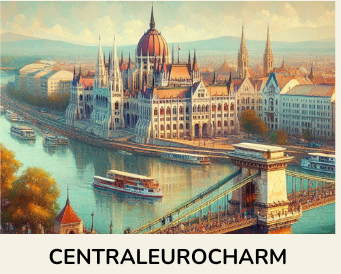Discover Austria’s rich past through ancient cultures, imperial grandeur, and modern resilience.
Ancient Roots: From Celtic Tribes to Roman Roads
Long before the Austrian Alps echoed with classical symphonies, Austria was home to Celtic tribes. These early inhabitants left behind fortified hilltop settlements and intricate artwork, laying the foundation for Austrian cultural identity. One of the best places to explore this ancient past is at the Hallstatt archaeological site, a UNESCO World Heritage Site set amidst serene lakes and alpine peaks.
The Romans later arrived, transforming the region with roads, cities, and administrative order. Their legacy lives on in places like Carnuntum, near Vienna, where travelers can walk through reconstructed Roman villas, bathhouses, and an amphitheater. The blend of Celtic craftsmanship and Roman engineering continues to shape Austria’s language, architecture, and traditions — especially in Lower Austria and Burgenland.
Medieval Austria: Castles, Dynasties, and Cultural Foundations
Austria’s medieval era was a time of transformation within the Holy Roman Empire. It was during this period that cities like Vienna and Melk emerged as influential centers of religion, politics, and trade.
The Babenberg dynasty (10th–13th centuries) played a crucial role in defining Austrian identity. Their patronage led to the development of trade routes and monasteries, including the stunning Melk Abbey — a baroque masterpiece rooted in medieval monastic life.
Defensive castles such as Hohenwerfen Castle (Salzburg) and Burg Kreuzenstein (near Vienna) offer today’s travelers a look into Austria’s feudal past. These fortresses served not only military functions but also hosted courts, negotiations, and noble households.
The Habsburg Dynasty: Austria’s Imperial Golden Age
From the late 13th century until World War I, the Habsburg dynasty ruled Austria and much of Europe. Through shrewd marriages and military alliances, they expanded their empire to include Hungary, Bohemia, northern Italy, and even Spain.
The Habsburgs’ influence is still visible across Austria, especially in Vienna:
- Schönbrunn Palace – Their opulent summer residence with 1,441 rooms and manicured gardens.
- Hofburg Palace – The heart of imperial power, now home to the Sisi Museum, Imperial Apartments, and Spanish Riding School.
- St. Stephen’s Cathedral – The spiritual heart of Vienna and a symbol of Austrian resilience.
- Kunsthistorisches Museum – Built to house the Habsburgs’ extensive art collection.
- Melk Abbey – Though pre-Habsburg, it flourished under their protection.
Under Habsburg rule, Austria became a hub for Baroque and Classical culture. Greats like Mozart, Haydn, and Schubert were nurtured in this golden age. Vienna, their imperial capital, blossomed into a center of culture, music, architecture, and diplomacy. Learn more in our post, Vienna – The Cultural Capital of Austria.
Austria’s Modern Journey: From Collapse to Confidence
Austria’s modern story began with the fall of the empire in 1918, following World War I. Stripped of its territories, Austria became a small republic grappling with economic hardship and identity loss.
In 1938, Nazi Germany annexed Austria during the Anschluss, plunging the country into the tragedies of World War II. Sites like the Mauthausen Concentration Camp Memorial and the House of Austrian History (Haus der Geschichte Österreich) provide insight into this dark period.
Austria regained full sovereignty in 1955 and declared perpetual neutrality, remaining independent throughout the Cold War. Vienna evolved into a diplomatic hub, home to the United Nations Office at Vienna and numerous international organizations.
In 1995, Austria joined the European Union, reinforcing its role as a modern, forward-thinking democracy. Cities like Vienna, Graz, and Linz now offer visitors a rich blend of imperial elegance and modern creativity — making Austria one of Europe’s most livable and culturally vibrant destinations.
Ready to Walk Through History?
Austria is more than a scenic destination — it’s a living storybook of Europe’s past. Whether you’re fascinated by ancient civilizations, imperial grandeur, or modern resilience, Austria offers unforgettable experiences for every curious traveler.
👉 Start planning your cultural adventure through Austria today!
Explore itineraries, discover hidden gems, and uncover the stories behind Europe’s most enchanting heartland.
